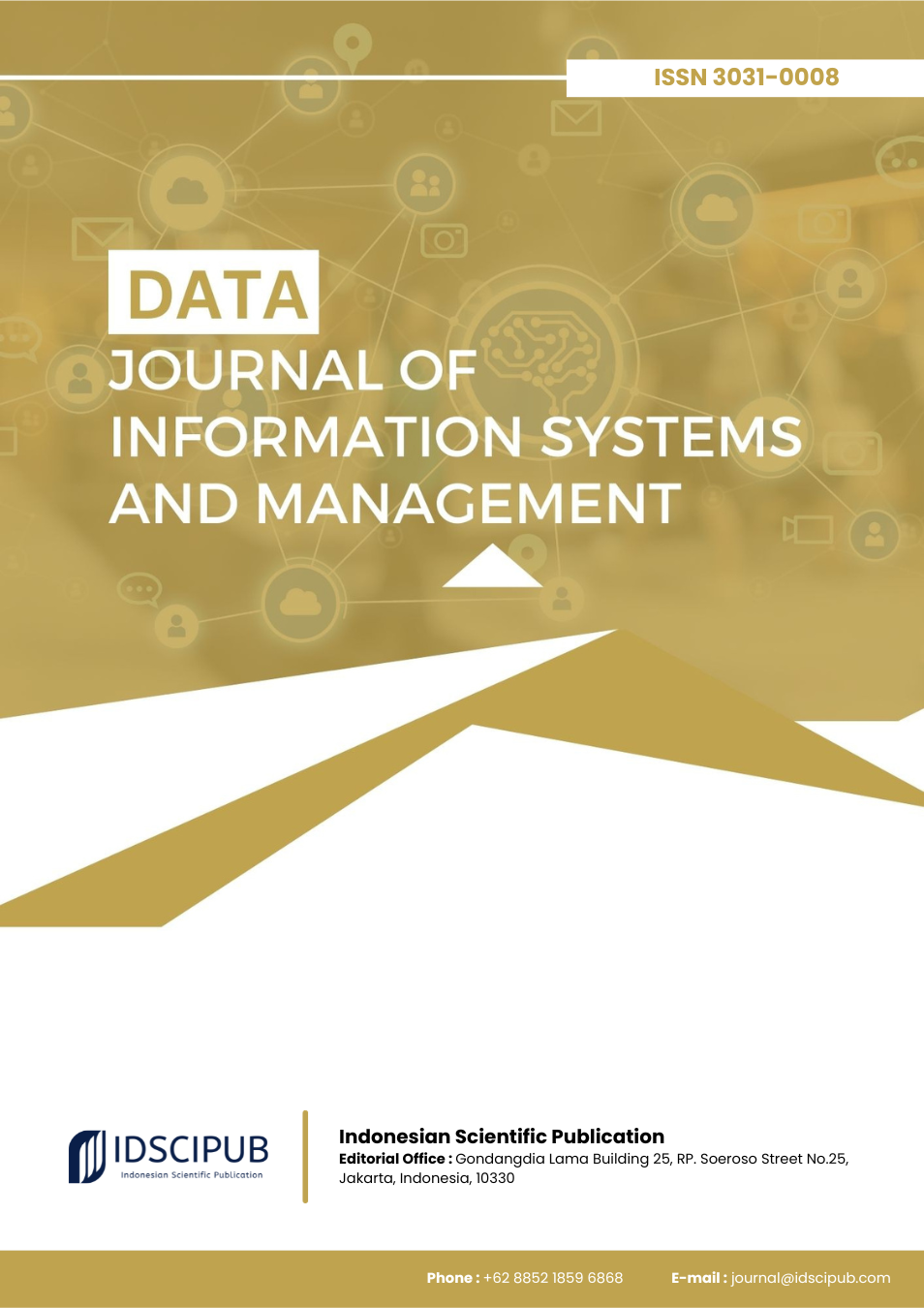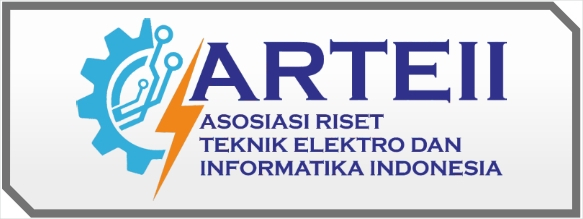Dark Patterns and Consumer Decision Making in Emerging Markets: Experimental Evidence from Indonesia
DOI:
https://doi.org/10.61978/data.v2i3.919Keywords:
Dark Patterns, Deceptive Design, Consumer Protection, Digital Literacy, Interface Ethics, Behavioral Experiment, IndonesiaAbstract
The rapid digitalization of Indonesia's economy has amplified concerns over deceptive interface designs known as dark patterns. These manipulative practices undermine user autonomy and raise legal and ethical questions. This study aims to provide experimental evidence specific to the Indonesian context, examining how four prevalent dark patterns urgency cues, drip pricing, consent manipulation, and fake social proof affect user trust, decision quality, and fairness perception within local e-commerce and fintech platforms. A between subjects experiment involving 300 participants was conducted using simulated Indonesian e commerce and fintech platforms. Participants were randomly assigned to one of five interface conditions: urgency, drip pricing, consent manipulation, fake social proof, or a neutral control. Behavioral metrics such as trust, regret, choice quality, and opt in rates were measured. Digital literacy was assessed as a moderating variable. All dark pattern treatments significantly reduced user trust and increased post decision regret compared to the control group. Drip pricing produced the highest regret and lowest fairness perception, while consent manipulation yielded inflated opt in rates. Low digital literacy was associated with greater susceptibility to deception and lower detection rates. These findings align with global behavioral research and highlight the vulnerability of digitally inexperienced users. Regulatory gaps were noted in Indonesia’s legal frameworks, which currently lack operational tools for addressing interface level manipulation. Dark patterns negatively impact consumer decision making and disproportionately affect vulnerable populations. Legal frameworks must evolve to explicitly define and penalize such designs. Promoting ethical UI practices and enhancing digital literacy are essential to safeguarding consumer rights and trust in Indonesia's digital economy.
References
Agus, & Taufik, H. E. R. (2017). Adoption Model of E-Commerce From SMEs Perspective in Developing Country Evidence – Case Study for Indonesia. European Research Studies Journal, XX(Issue 4B), 227–243. https://doi.org/10.35808/ersj/887 DOI: https://doi.org/10.35808/ersj/887
Andikatama, A. Z., & Turisno, B. E. (2024). Consumer Protection Law in the Digital Era. International Journal of Social Science and Human Research, 7(07). https://doi.org/10.47191/ijsshr/v7-i07-03 DOI: https://doi.org/10.47191/ijsshr/v7-i07-03
Arifin, R., Kambuno, J. A., Waspiah, W., & Latifiani, D. (2021). Protecting the Consumer Rights in the Digital Economic Era: Future Challenges in Indonesia. Jambura Law Review, 3, 135–160. https://doi.org/10.33756/jlr.v3i0.9635 DOI: https://doi.org/10.33756/jlr.v3i0.9635
Cardoso, F., Afonso, J., Roca, A., & Teoldo, I. (2020). The Association Between Perceptual-Cognitive Processes and Response Time in Decision Making in Young Soccer Players. Journal of Sports Sciences, 39(8), 926–935. https://doi.org/10.1080/02640414.2020.1851901 DOI: https://doi.org/10.1080/02640414.2020.1851901
Cemiloglu, D., Catania, M., & Ali, R. (2021). Explainable Persuasion in Interactive Design. 377–382. https://doi.org/10.1109/rew53955.2021.00066 DOI: https://doi.org/10.1109/REW53955.2021.00066
Cho, Y.-J. (2017). A Consumer Satisfaction Model Based on the Integration of EDT and TAM. Asia Pacific Journal of Marketing and Logistics, 29(5), 978–993. https://doi.org/10.1108/apjml-07-2016-0127 DOI: https://doi.org/10.1108/APJML-07-2016-0127
Dewi, W. E., Khouroh, U., & Natsir, M. (2024). The Influence of Technology Acceptance on E-Commerce Behavior of Sociolla Users Is Mediated by Behavioral Intentions (UTAUT 2 Testing Study). Journal of Economics Finance and Management Studies, 07(04). https://doi.org/10.47191/jefms/v7-i4-05 DOI: https://doi.org/10.47191/jefms/v7-i4-05
Ghose, A., Lee, H. A., Nam, K., & Oh, W. (2023). The Effects of Pressure and Self-Assurance Nudges on Product Purchases and Returns in Online Retailing: Evidence From a Randomized Field Experiment. Journal of Marketing Research, 61(3), 517–535. https://doi.org/10.1177/00222437231180494 DOI: https://doi.org/10.1177/00222437231180494
Goldsmith, K., Griskevicius, V., & Hamilton, R. (2020). Scarcity and Consumer Decision Making: Is Scarcity a Mindset, a Threat, a Reference Point, or a Journey? Journal of the Association for Consumer Research, 5(4), 358–364. https://doi.org/10.1086/710531 DOI: https://doi.org/10.1086/710531
Hati, S. R. H., & Latip, H. A. (2023). Behind the Curtain of Payday Lending: Revealing Consumer Insights and Ethical Challenges in Indonesia and the USA Using Web-Scraping Methods. International Journal of Ethics and Systems, 40(2), 436–452. https://doi.org/10.1108/ijoes-03-2023-0060 DOI: https://doi.org/10.1108/IJOES-03-2023-0060
Higham, J., Hanna, P., Hopkins, D., Cohen, S. A., Gößling, S., & Cocolas, N. (2021). Reconfiguring Aviation for a Climate-Safe Future: Are Airlines Sending the Wrong Message? Journal of Travel Research, 61(6), 1458–1473. https://doi.org/10.1177/00472875211033648 DOI: https://doi.org/10.1177/00472875211033648
Hmurovic, J., Lamberton, C., & Goldsmith, K. (2022). Examining the Efficacy of Time Scarcity Marketing Promotions in Online Retail. Journal of Marketing Research, 60(2), 299–328. https://doi.org/10.1177/00222437221118856 DOI: https://doi.org/10.1177/00222437221118856
Hunt, J., Bristowe, K., Chidyamatare, S., & Harding, R. (2019). ‘So Isolation Comes In, Discrimination and You Find Many People Dying Quietly Without Any Family Support’: Accessing Palliative Care for Key Populations – An in-Depth Qualitative Study. Palliative Medicine, 33(6), 685–692. https://doi.org/10.1177/0269216319835398 DOI: https://doi.org/10.1177/0269216319835398
Iantorno, M., Guadagnolo, D., & Petterson, A. (2023). Dark Patterns and Pedagogy: Expanding Scholarship and Curriculum on Manipulative Marketing Practices. Aoir Selected Papers of Internet Research. https://doi.org/10.5210/spir.v2023i0.13430 DOI: https://doi.org/10.5210/spir.v2023i0.13430
Ienca, M., Ferretti, A., Hurst, S., Puhan, M. A., Lovis, C., & Vayena, E. (2018). Considerations for Ethics Review of Big Data Health Research: A Scoping Review. Plos One, 13(10), e0204937. https://doi.org/10.1371/journal.pone.0204937 DOI: https://doi.org/10.1371/journal.pone.0204937
Jamalifard, M., Russell‐Rose, T., & Brignull, H. (2024). Exploring Deceptive Patterns: Insights From Eye Tracking, EMG and Sentiment Analysis. https://doi.org/10.14236/ewic/bcshci2024.20 DOI: https://doi.org/10.14236/ewic/BCSHCI2024.20
Kharisma, D. B. (2020). Urgency of Financial Technology (Fintech) Laws in Indonesia. International Journal of Law and Management, 63(3), 320–331. https://doi.org/10.1108/ijlma-08-2020-0233 DOI: https://doi.org/10.1108/IJLMA-08-2020-0233
Luguri, J. B., & Strahilevitz, L. (2021). Shining a Light on Dark Patterns. The Journal of Legal Analysis, 13(1), 43–109. https://doi.org/10.1093/jla/laaa006 DOI: https://doi.org/10.1093/jla/laaa006
Mackey, T. K., Nali, M., Larsen, M. Z., Li, Z., Li, J., & Yang, J. (2024). Online Availability of Diamond Shruumz Before and After FDA Recall Initiation: Qualitative Assessment and Simulated Test Purchasing (Preprint). Journal of Medical Internet Research. https://doi.org/10.2196/64820 DOI: https://doi.org/10.2196/preprints.64820
Mathur, A., Kshirsagar, M., & Mayer, J. (2021). What Makes a Dark Pattern... Dark? 1–18. https://doi.org/10.1145/3411764.3445610 DOI: https://doi.org/10.1145/3411764.3445610
Matnuh, H. (2021). Rectifying Consumer Protection Law and Establishing of a Consumer Court in Indonesia. Journal of Consumer Policy, 44(3), 483–495. https://doi.org/10.1007/s10603-021-09487-z DOI: https://doi.org/10.1007/s10603-021-09487-z
Mupangavanhu, Y., & Kerchhoff, D. (2023). Online Deceptive Advertising and Consumer Protection in South Africa—The Law and Its Shortcomings? De Jure, 56(1), 86–106. https://doi.org/10.17159/2225-7160/2023/v56a7 DOI: https://doi.org/10.17159/2225-7160/2023/v56a7
Oyibo, K., & Morita, P. P. (2022). Factors Influencing the Willingness to Download COVID-19 Contact Tracing Apps: The Moderating Effect of Persuasive Design and Smartphone Usage Experience. Proceedings of the International Symposium on Human Factors and Ergonomics in Health Care, 11(1), 163–169. https://doi.org/10.1177/2327857922111033 DOI: https://doi.org/10.1177/2327857922111033
Patrada, R., & Andajani, E. (2021). Effect and Consequence E-Customer Satisfaction for E-Commerce Users. Iptek Journal of Proceedings Series, 0(1), 219. https://doi.org/10.12962/j23546026.y2020i1.8491 DOI: https://doi.org/10.12962/j23546026.y2020i1.8491
Prabowo, M. S., & Sulistianingsih, D. (2023). Reformulation of Consumer Protection Legal Policies in the Digital Business Era in Indonesia. Diponegoro Law Review, 8(1), 14–24. https://doi.org/10.14710/dilrev.8.1.2023.14-24 DOI: https://doi.org/10.14710/dilrev.8.1.2023.14-24
Prastyanti, R. A., Yafi, E., Wardiono, K., & Budiono, A. (2021). The Legal Aspect of Consumers’ Protection From Pop-Up Advertisements in Indonesia. Lentera Hukum, 8(1), 73. https://doi.org/10.19184/ejlh.v8i1.23479 DOI: https://doi.org/10.19184/ejlh.v8i1.23479
Ramadhan, M. T. A., Fitri, W., & Agustianto, A. (2024). Consumer Data Protection Amidst the Rise of Online Loan Services: Safeguarding Personal Data Privacy. Legal Spirit, 8(2), 453–462. https://doi.org/10.31328/ls.v8i2.5502 DOI: https://doi.org/10.31328/ls.v8i2.5502
Rongiyati, S. (2019). Pelindungan Konsumen Dalam Transaksi Dagang Melalui Sistem Elektronik (Consumer Protection in E-Commerce). Negara Hukum Membangun Hukum Untuk Keadilan Dan Kesejahteraan, 10(1), 1–25. https://doi.org/10.22212/jnh.v10i1.1223 DOI: https://doi.org/10.22212/jnh.v10i1.1223
Rose, J., & MacGregor, O. (2021). The Architecture of Algorithm-Driven Persuasion. Journal of Information Architecture, 6(1), 7–40. https://doi.org/10.55135/1015060901/211.009/2.037 DOI: https://doi.org/10.55135/1015060901/211.009/2.037
Santoso, M. A., & Marlinah, M. (2024). Consumer Protection in Business Law: Conflict of Norms and Its Implications Under Article 18 of Law No. 8 of 1999 on Consumer Protection. International Journal of Multidisciplinary Research and Analysis, 07(10). https://doi.org/10.47191/ijmra/v7-i10-42 DOI: https://doi.org/10.47191/ijmra/v7-i10-42
Saura, J. R., Reyes-Menéndez, A., & Palos‐Sánchez, P. R. (2019). Are Black Friday Deals Worth It? Mining Twitter Users’ Sentiment and Behavior Response. Journal of Open Innovation Technology Market and Complexity, 5(3), 58. https://doi.org/10.3390/joitmc5030058 DOI: https://doi.org/10.3390/joitmc5030058
Susser, D., Roessler, B., & Nissenbaum, H. (2019). Technology, Autonomy, and Manipulation. Internet Policy Review, 8(2). https://doi.org/10.14763/2019.2.1410 DOI: https://doi.org/10.14763/2019.2.1410
Syamsudin, M. (2020). The Failure of the Court to Protect Consumers: A Review of Consumer Dispute Resolution in Indonesia. Journal of Consumer Policy, 44(1), 117–130. https://doi.org/10.1007/s10603-020-09470-0 DOI: https://doi.org/10.1007/s10603-020-09470-0
Tomm, B. M., Shafir, E., & Zhao, J. (2023). Scarcity Captures Attention and Induces Neglect: Eyetracking and Behavoral Evidence. https://doi.org/10.31234/osf.io/c9jq6 DOI: https://doi.org/10.31234/osf.io/c9jq6
Tromp, J., Wurm, F., Lucchi, F., Kleijn, R. d., & Nieuwenhuis, S. (2024). Phasic Alertness Generates Urgency and Amplifies Competition Between Evidence Accumulators. https://doi.org/10.1101/2024.06.18.599522 DOI: https://doi.org/10.1101/2024.06.18.599522
Trzaskowski, J. (2024). Manipulation by Design. Electronic Markets, 34(1). https://doi.org/10.1007/s12525-024-00699-y DOI: https://doi.org/10.1007/s12525-024-00699-y
Valenti, E., & Giacco, D. (2022). Persuasion or Coercion? An Empirical Ethics Analysis About the Use of Influence Strategies in Mental Health Community Care. BMC Health Services Research, 22(1). https://doi.org/10.1186/s12913-022-08555-5 DOI: https://doi.org/10.1186/s12913-022-08555-5
Voorveld, H., & Araujo, T. (2020). How Social Cues in Virtual Assistants Influence Concerns and Persuasion: The Role of Voice and a Human Name. Cyberpsychology Behavior and Social Networking, 23(10), 689–696. https://doi.org/10.1089/cyber.2019.0205 DOI: https://doi.org/10.1089/cyber.2019.0205
Wood, S., Liu, P., Hanoch, Y., Xi, P. M., & Klapatch, L. (2018). Call to Claim Your Prize: Perceived Benefits and Risk Drive Intention to Comply in a Mass Marketing Scam. Journal of Experimental Psychology Applied, 24(2), 196–206. https://doi.org/10.1037/xap0000167 DOI: https://doi.org/10.1037/xap0000167
Zamfir, M. D. (2024). Scarcity Effect and Consumer Decision Biases: How Urgency Influences the Perceived Value of Products. Journal of World Economy, 3(4), 27–34. https://doi.org/10.56397/jwe.2024.12.04 DOI: https://doi.org/10.56397/JWE.2024.12.04
Zhang⋆, Y., Abbas, H., & Sun, Y. (2019). Smart E-Commerce Integration With Recommender Systems. Electronic Markets, 29(2), 219–220. https://doi.org/10.1007/s12525-019-00346-x DOI: https://doi.org/10.1007/s12525-019-00346-x






